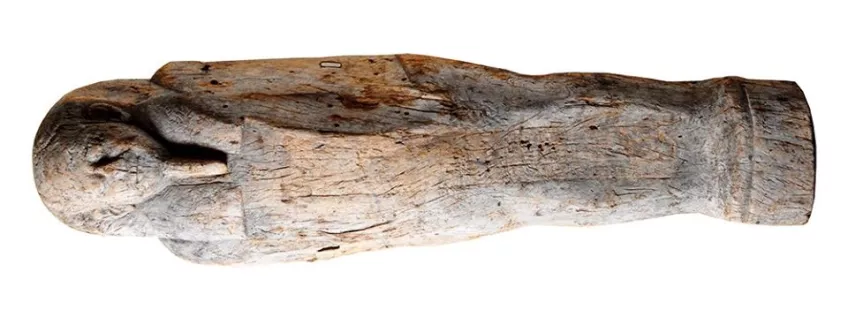Artefacts
Museum Stobaeanum included a collection of artefacts, originally labeled ”artificialia”. It consisted primarily of ethnographic objects from Asia, North and South America, Russia, Siberia, Greenland and Lapland, but also Classical antiquities, Nordic antiques, curious European works of art, as well as scientific instruments and models.
Museum Stobaeanum included a comparatively small collection of artefacts, which was collectively labeled as ”artificialia”. It consisted primarily of ethnographic objects from East Asia, North and South America, Russia, Siberia, Greenland and Lapland, but also included classical antiquities, Nordic antiques, curious European works of art, as well as scientific instruments and models. The inventory of 1759 lists more than 109 artefacts. The archaeological stone artefacts were originally classified as lapides arte elaborati and were regarded as something inbetween cultural artefacts and natural objects. Unlike the large collection of natural history, which grew rapidly after Stobaeus’s donation in 1735, the number of ”artificialia” remained mostly the same. In 1805 these artefacts, together with the Coin Cabinet, formed the foundation of the collections of the Historical Museum at Lund University.
Research in the archives documents that most of the artefacts from Museum Stobaeanum, which were previously considered to be lost, are actually still in the collections of the Historical Museum, albeit mislabeled or wrongly classified. Some of the interesting artefacts are an Egyptian mummy which was looted by the envoys Carl Frederik von Höpken and Edvard Carleson in Saqqara in 1734, Chinese objects from the first expeditions of the Swedish East India Company, and exceedingly rare North American artefacts collected by the pastor Samuel Hesselius in 1719–1731.
Explore the objects in Alvin
- The inventory of 1759
- The Egyptian mummy
- Chinese objects
- North American artefacts, such as:
- river cane basket
- idol pendant
- wampum
- stone tools
Categories:
- Swedish East India Company
- Swedish mission in Pennsylvania
- The Guianas
- Carolean prisoners of war
- Nordic Arctic
- Catholic objects
- Classical antiquities
- Nordic antiques
- Curious works of art
- Scientific instruments and models
Explore the artefacts of Museum Stobaeanum


